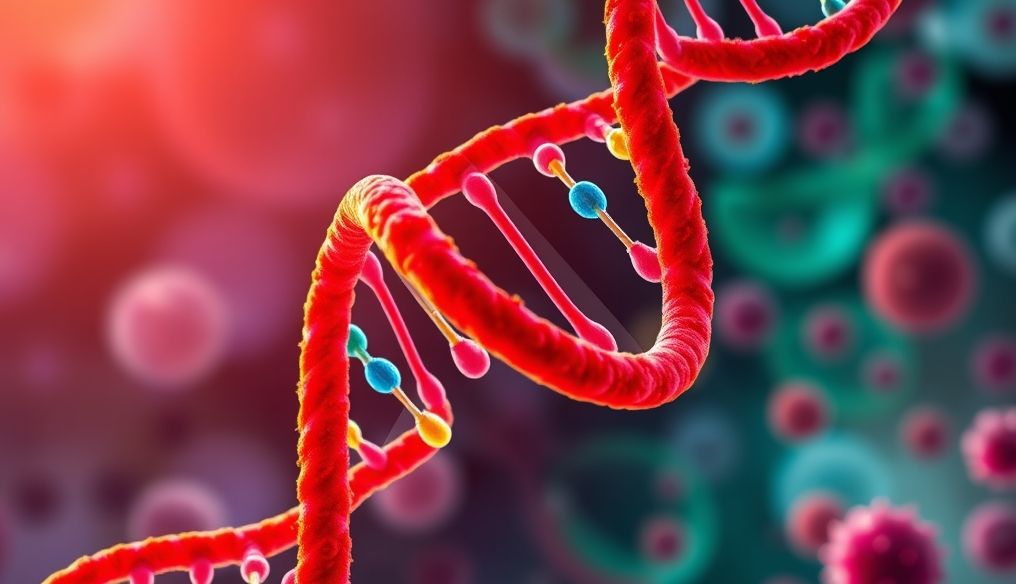What is DNA?
Deoxyribonucleic acid (DNA) is a complex molecule that contains the genetic instructions necessary for the growth, development, functioning, and reproduction of all known living organisms and many viruses. DNA is often referred to as the "blueprint" or "user manual" of an organism, containing all the information needed to build and organize cells, tissues, and organs.
DNA Structure
DNA is composed of subunits called nucleotides. Each nucleotide consists of three main components:
- Nitrogenous Base: There are four types of nitrogenous bases in DNA: adenine (A), thymine (T), cytosine (C), and guanine (G).
- Deoxyribose Sugar: A five-carbon sugar.
- Phosphate Group: A chemical group containing phosphorus and oxygen.
Nucleotides are linked together to form a long chain, and two DNA chains form a double helix. The nitrogenous bases between the two chains are linked in a specific manner: adenine (A) always pairs with thymine (T), and cytosine (C) always pairs with guanine (G). This specific pairing ensures that the two chains are complementary.
How Does DNA Determine Our Genetic Traits?
The genetic code in DNA contains the instructions for making proteins. Proteins are the main functional molecules in cells and are responsible for most biological processes, including:
- Enzymes: Catalyze chemical reactions in cells.
- Hormones: Regulate physiological processes.
- Structural Proteins: Provide support and structure to cells and tissues.
The sequences of nitrogenous bases in DNA determine the sequence of amino acids in proteins. The amino acid sequence, in turn, determines the shape and function of the protein. Thus, DNA indirectly determines all the genetic traits of an organism, from eye color to height to predisposition to certain diseases.
Genes and Chromosomes
A gene is a segment of DNA that contains the instructions for making a specific protein. Living organisms carry millions of genes in their cells. DNA is organized into structures called chromosomes. Humans have 23 pairs of chromosomes, for a total of 46 chromosomes. Each person inherits one copy of each chromosome from each parent.
DNA Replication
Before a cell divides, DNA must be replicated to ensure that each new cell receives a complete copy of the genetic code. This process is carried out by an enzyme called DNA polymerase. This enzyme separates the two double-stranded DNA chains and then uses each chain as a template to build a new complementary chain. The result is two identical copies of DNA.
Translation
Translation is the process by which the information in DNA is used to make proteins. This process begins by copying a portion of DNA into a molecule called messenger RNA (mRNA). The mRNA then moves to ribosomes, which are the protein factories in the cell. Ribosomes read the nucleotide sequence in mRNA and use it to assemble amino acids in the correct order to form the desired protein.
Genetic Mutations
Mutations are changes in the DNA sequence. Mutations can occur spontaneously or due to environmental factors such as radiation or chemicals. Mutations can be harmful, beneficial, or neutral. Harmful mutations can lead to genetic diseases, while beneficial mutations can increase an organism's chances of survival and reproduction.
The Importance of DNA in Medicine and Science
DNA plays a crucial role in many fields, including:
- Medical Diagnosis: DNA analysis can be used to diagnose genetic diseases and infections.
- Gene Therapy: Gene therapy can be used to correct genetic defects.
- Forensic Science: DNA analysis can be used to identify criminals.
- Evolutionary Biology: DNA can be used to study the relationship between living organisms and track their evolution over time.
- Agriculture: Genetic engineering can be used to improve crops and increase their yield.
The Future of DNA Research
Research on DNA continues to evolve rapidly. Some promising areas of research include:
- Gene Editing: Techniques such as CRISPR-Cas9 allow scientists to precisely edit DNA.
- Genomics: The study of the entire genome of living organisms.
- Personalized Medicine: Using genetic information to personalize medical treatment for each individual.
Conclusion
DNA is the biological molecule that carries the genetic code, and it is the basis of life as we know it. Understanding DNA and how it works is essential for understanding biology, medicine, and many other fields. As research continues, we will discover more about this fascinating molecule and its immense potential.




